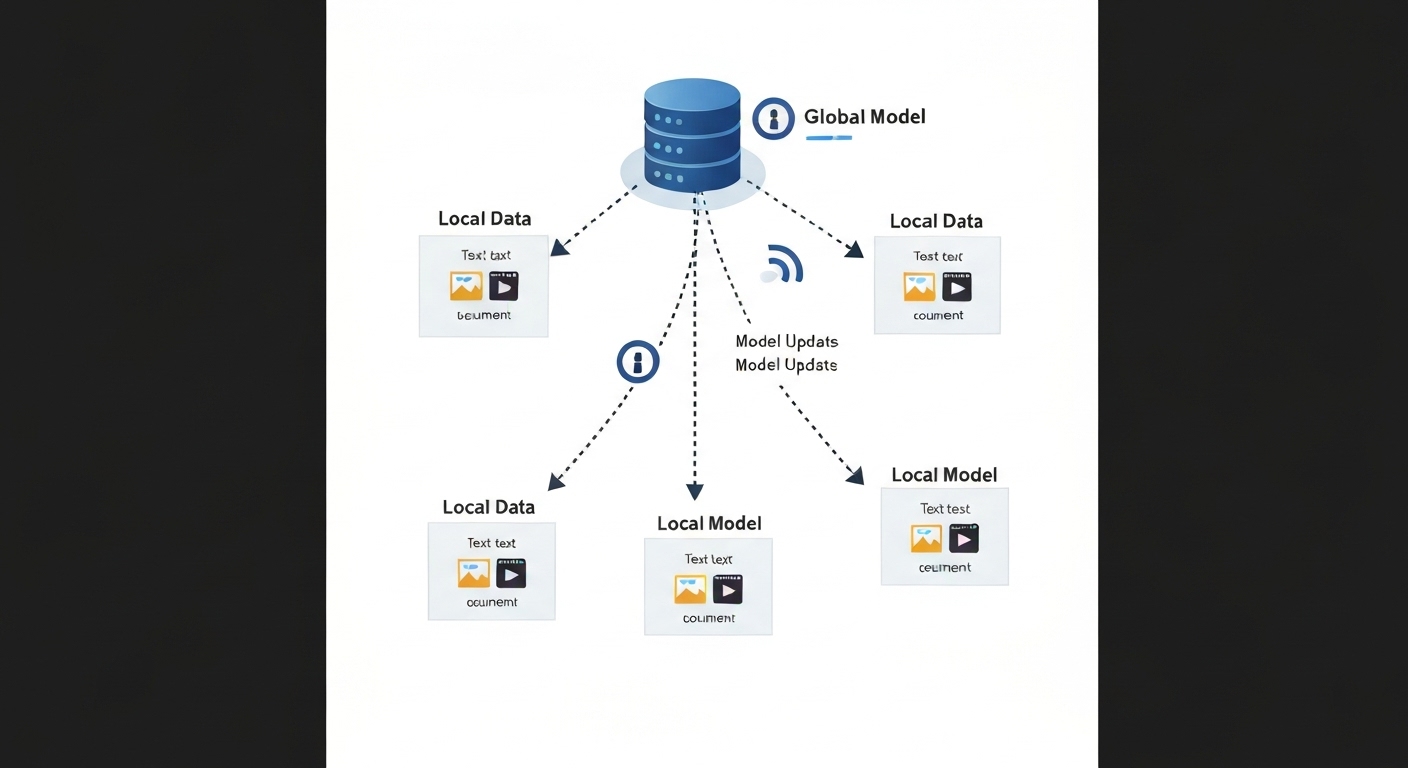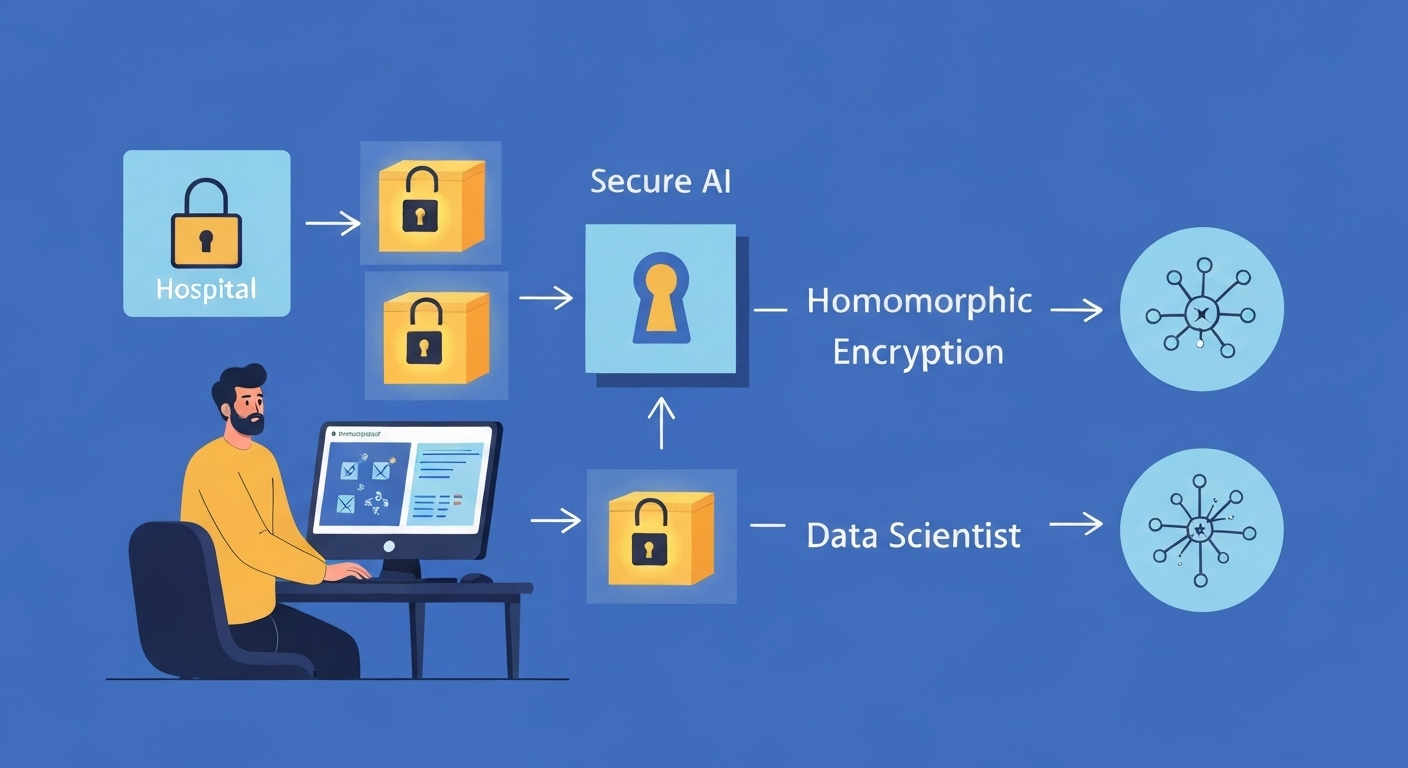AI for Secure Data Sharing : Revolutionizing Data Privacy
AI for secure data sharing is revolutionizing how organizations handle sensitive information. By leveraging advanced techniques, AI enables secure collaboration and analysis without compromising data privacy.

Understanding the Need for Secure Data Sharing
In today’s data-driven world, organizations increasingly need to share data for various purposes, including research, collaboration, and innovation. However, data sharing often raises concerns about privacy and security. Traditional methods of data sharing can expose sensitive information to unauthorized access and misuse. Therefore, innovative approaches like AI are vital for securely exchanging data while upholding privacy regulations.
AI-Powered Techniques for Secure Data Sharing
Several AI techniques offer solutions for secure data sharing. These methods aim to protect data privacy while enabling meaningful analysis and collaboration.
Federated Learning: Collaborative Model Training
Federated learning allows multiple parties to train a shared model without exchanging raw data. Each party trains the model locally on its data, and only the model updates are shared with a central server. This approach protects the privacy of individual data sources while still enabling effective model training. Learn more about AI data security solutions.

Differential Privacy: Adding Noise for Anonymity
Differential privacy adds a carefully calibrated amount of noise to the data or the results of data analysis. This noise obscures individual data points, making it difficult to identify specific individuals while still allowing for useful aggregate analysis. It ensures that the inclusion or exclusion of any single individual’s data has a limited impact on the overall results. Protecting privacy is a significant concern for many organizations.
Homomorphic Encryption: Computing on Encrypted Data
Homomorphic encryption allows computations to be performed on encrypted data without decrypting it first. This means that data can be processed securely without ever being exposed in its raw form. The results of the computations are also encrypted, and only authorized parties with the decryption key can access the results.

Secure Multi-Party Computation (SMPC)
SMPC allows multiple parties to jointly compute a function over their private inputs without revealing those inputs to each other. Each party contributes to the computation, but no single party can see the data of the other parties. This is particularly useful in scenarios where multiple organizations need to collaborate on a data analysis project but cannot share their raw data due to privacy concerns. Protecting sensitive information is critical for maintaining trust and meeting regulatory requirements.
Data Anonymization and Pseudonymization
Data anonymization involves removing or altering identifying information from a dataset to prevent the identification of individuals. Pseudonymization replaces identifying information with pseudonyms, making it more difficult to link data back to individuals. Both methods can be used to reduce the risk of privacy breaches when sharing data. It’s important to carefully assess the effectiveness of anonymization techniques to ensure they adequately protect privacy. Protecting personal data is vital in the modern digital landscape.

Benefits of Using AI for Secure Data Sharing
Implementing AI for secure data sharing offers several advantages:
- Enhanced Privacy: AI techniques protect sensitive data from unauthorized access and misuse.
- Improved Data Security: AI helps to secure data sharing while enabling valuable insights.
- Facilitated Collaboration: Secure data sharing enables organizations to collaborate on data analysis projects without compromising privacy.
- Compliance with Regulations: AI solutions can help organizations comply with data privacy regulations such as GDPR and CCPA.
- Increased Trust: By protecting data privacy, organizations can build trust with their stakeholders.
Applications of AI in Secure Data Sharing
AI for secure data sharing has a wide range of applications across various industries:
- Healthcare: Sharing medical data for research and treatment while protecting patient privacy.
- Finance: Collaborating on fraud detection and risk management without revealing sensitive customer data.
- Government: Sharing data between agencies for law enforcement and national security while ensuring privacy.
- Retail: Sharing customer data for personalized marketing and product recommendations while protecting personal information.

Challenges and Considerations
While AI offers promising solutions for secure data sharing, several challenges and considerations must be addressed:
- Complexity: Implementing AI-powered secure data sharing techniques can be complex and require specialized expertise.
- Computational Cost: Some AI techniques, such as homomorphic encryption, can be computationally expensive.
- Data Utility: Balancing privacy and data utility is crucial to ensure that data sharing remains valuable.
- Regulatory Compliance: Organizations must ensure that their data sharing practices comply with relevant data privacy regulations.
- Security Risks: Properly implementing secure data sharing requires expertise to avoid unintended data exposure.
Future Trends in AI for Secure Data Sharing
The field of AI for secure data sharing is constantly evolving, with new techniques and applications emerging regularly. Some future trends include:
- Advancements in Federated Learning: Developing more efficient and robust federated learning algorithms.
- Improvements in Differential Privacy: Creating more accurate and flexible differential privacy mechanisms.
- Standardization of Secure Data Sharing Protocols: Developing standardized protocols for secure data sharing to improve interoperability.
- Integration of AI with Blockchain: Combining AI with blockchain technology to create more secure and transparent data sharing systems.
Conclusion
AI for secure data sharing is transforming the way organizations handle sensitive information. By leveraging techniques such as federated learning, differential privacy, and homomorphic encryption, organizations can collaborate on data analysis projects while protecting data privacy. While challenges remain, the benefits of AI-powered secure data sharing are significant, enabling innovation, compliance, and trust. As AI continues to evolve, we can expect even more sophisticated and effective solutions for secure data sharing to emerge. For detailed insights into differential privacy, you can explore the resources at census.gov.
Protecting your data is critical in today’s digital landscape. Consider implementing robust data security measures to safeguard your organization’s sensitive information.
HOTLINE
+84372 005 899


